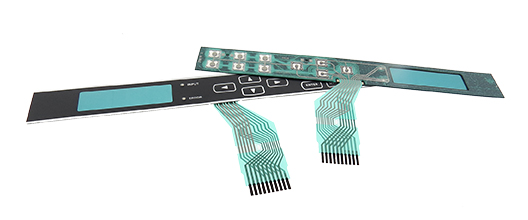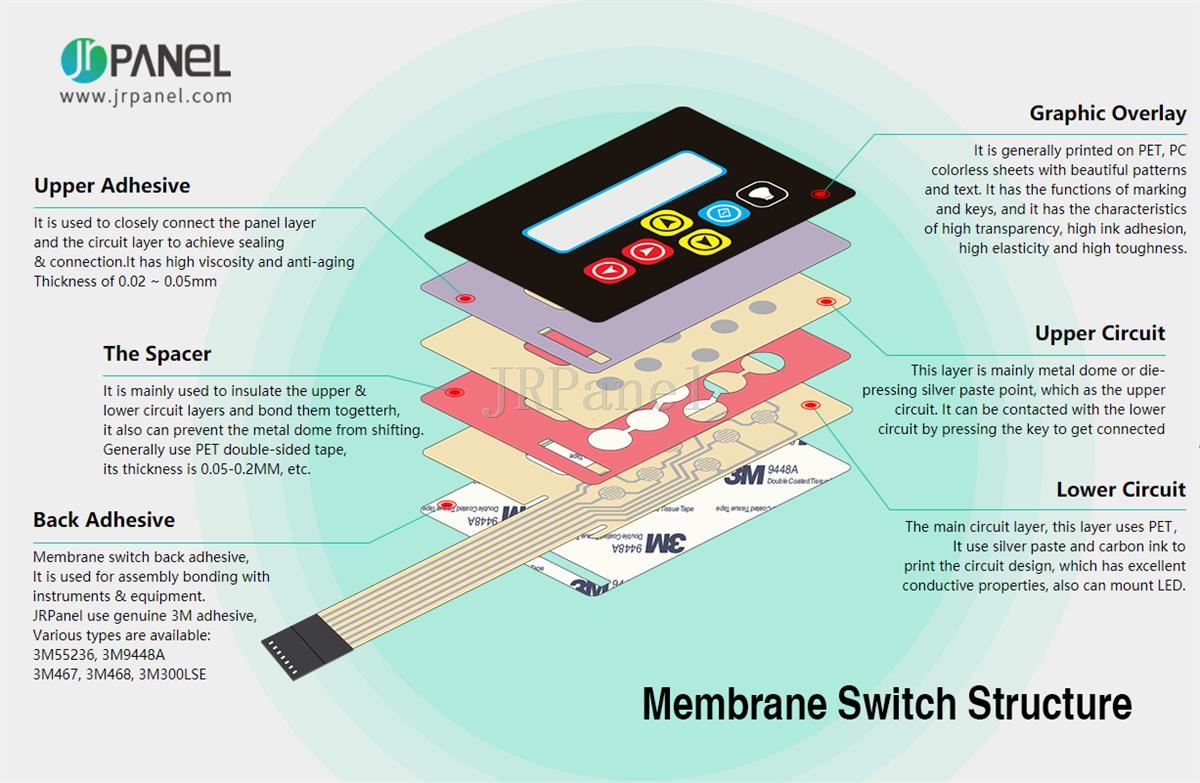Just How Membrane Switches Enhance Capability in Industrial and Consumer Applications
Just How Membrane Switches Enhance Capability in Industrial and Consumer Applications
Blog Article
The Ultimate Resource on Membrane Switches: Style, Functionality, and Applications
Membrane layer switches over offer as an intriguing intersection of style and performance, playing a crucial role in modern-day interface across different fields. This source unpacks the vital components that contribute to their efficiency, consisting of graphic overlays and circuit traces, while likewise clarifying the systems behind their pressure activation. As we check out the varied applications of membrane switches, it becomes evident that their versatility and sturdiness are important in atmospheres ranging from medical care to customer electronic devices. The subtleties of their layout and operational principles may reveal even much deeper insights worth taking into consideration.

Comprehending Membrane Layer Buttons
Membrane buttons are a kind of customer interface technology extensively used in numerous digital devices, identified by their thin, versatile design and capability. These switches contain multiple layers that consist of graphic overlays, adhesive layers, and circuitry, enabling a reliable and compact user interface for customers. They can be found in home appliances, clinical devices, and commercial control board, giving a dependable approach for customer communication.
One of the main advantages of membrane layer buttons is their ability to stand up to pollutants such as dust and wetness, making them appropriate for settings where resilience is crucial. Their low-profile layout permits for seamless integration into various applications, while the adjustable visuals overlays boost user experience by offering clear aesthetic feedback. Additionally, membrane switches can suit a selection of innovations, such as tactile comments and backlighting, additional enhancing their use.
The production process for membrane layer switches typically includes screen lamination, die-cutting, and printing strategies, guaranteeing precision and uniformity in manufacturing. In general, membrane switches stand for a efficient and flexible solution for modern-day electronic devices, combining functionality with visual charm in user interface design.
Key Elements and Style Elements
A selection of crucial elements and layout aspects integrated to produce a reliable membrane button. At the core, the graphic overlay offers both aesthetic and useful functions, using an easy to use user interface while securing internal parts from ecological factors. The option of materials, commonly polyester or polycarbonate, affects resilience and responsive feedback.
Underneath the overlay, the sticky layer makes certain the switch sticks firmly to the substrate, which can be plastic, glass, or steel. The spacer layer is essential, as it preserves the necessary space in between the circuit and the overlay layers, allowing for efficient actuation. Membrane Switches. Circuit traces, generally made from conductive ink or adhesive, are printed on an adaptable substrate, allowing electric signals to be transferred when pressure is applied
Style factors to consider likewise consist of the arrangement of tactile domes or embossing that supply physical responses to the individual, boosting the total experience. Furthermore, the layout and spacing of the buttons must be optimized for ease of usage, making certain that customers can navigate the interface with ease. Overall, these components and design aspects function synergistically to develop a reputable, functional membrane button customized to details applications.
Capability and Procedure Mechanism
At the heart of effective functionality for membrane changes exists their functional system, which assists in customer communication through a simple yet efficient layout. These switches operate on the principle of pressure activation, where a customer uses force to a marked area of the switch (Membrane Switches). This activity compresses the layers of the switch, finishing an electric circuit that sends a signal to the linked tool
The building and construction commonly includes a top visuals layer, a glue spacer layer, and a lower circuit layer, which jointly develop a robust user interface. When stress is applied, the leading layer falls down against the bottom circuit layer, enabling conductive traces to link. This design not just makes it possible for clear responsive feedback however likewise ensures resilience and dependability, as the switches are frequently immune to dirt and dampness.
In addition, the convenience of membrane switches discover here permits integration with various modern technologies, including LED indications and microcontrollers, enhancing their functionality. By giving a streamlined user interface that minimizes mechanical wear, membrane switches over remain a popular option in applications varying from consumer electronic devices to industrial tools, guaranteeing optimum performance and user fulfillment across diverse atmospheres.
Kinds of Membrane Switches

Another considerable group is brightened membrane switches, which integrate backlighting to improve presence in low-light conditions. These buttons are often utilized in control panels and dashboards where clear visibility is crucial.
Furthermore, there are customized membrane switches developed to fulfill details dimensional, visual, and useful needs. These customizations can include distinct shapes, colors, and layouts, permitting smooth assimilation into numerous tools.

Applications Across Various Industries
Just how do membrane buttons click here for more enhance capability across varied markets? In the clinical industry, membrane switches play an essential duty in tools such as analysis tools and individual monitoring systems, where dependability and convenience of cleansing are paramount.
In the vehicle industry, membrane switches are typically made use of in dashboards and control panels, offering intuitive controls that boost chauffeur safety and security and convenience. The consumer electronic devices market additionally benefits from their light-weight and customizable functions, enabling smooth layouts for smart devices and home appliances.
Moreover, membrane layer buttons locate applications in industrial automation, where they contribute to reliable machinery operation and surveillance systems. Their resistance to dirt and moisture makes sure functionality popular conditions (Membrane Switches). Furthermore, the food and drink sector employs membrane switches for devices control, where hygiene and durability are important
Verdict
To conclude, membrane layer switches represent a critical innovation in user interface technology, characterized by their special layout and capability. Their vital components, including graphic overlays and circuit traces, add to their functional effectiveness via stress activation. The adaptability of membrane layer switches facilitates their application throughout diverse industries, from clinical gadgets to customer electronic devices. This detailed understanding strengthens the importance of membrane layer switches in enhancing product use and longevity in modern technological environments.
Membrane layer changes serve as an intriguing intersection of style and functionality, playing a pivotal function in contemporary user interfaces throughout different sectors.Membrane layer switches are a type of customer interface technology extensively utilized in numerous electronic devices, defined by their thin, flexible style and functionality.At the heart of effective capability for membrane switches over lies their functional mechanism, which assists in customer communication via a simple yet efficient layout. These buttons run on the principle of stress activation, where a user uses pressure to a marked area of the button.In verdict, membrane layer changes stand for an essential technology in user interface technology, identified by their distinct layout and capability.
Report this page